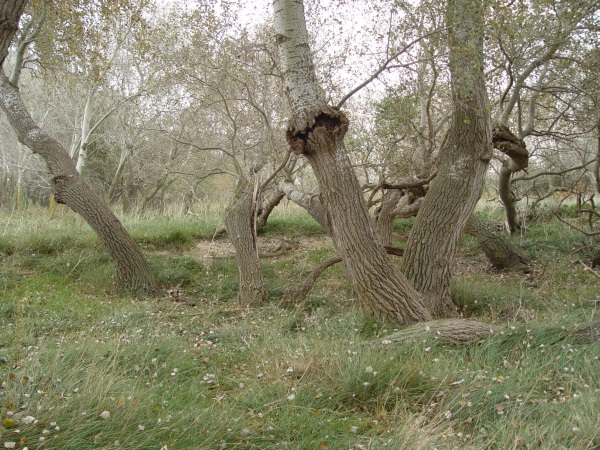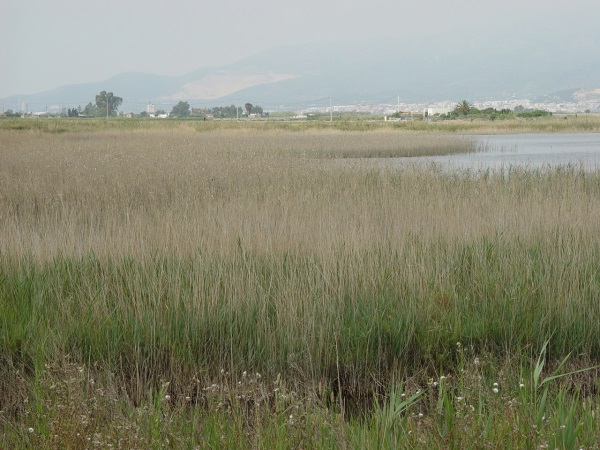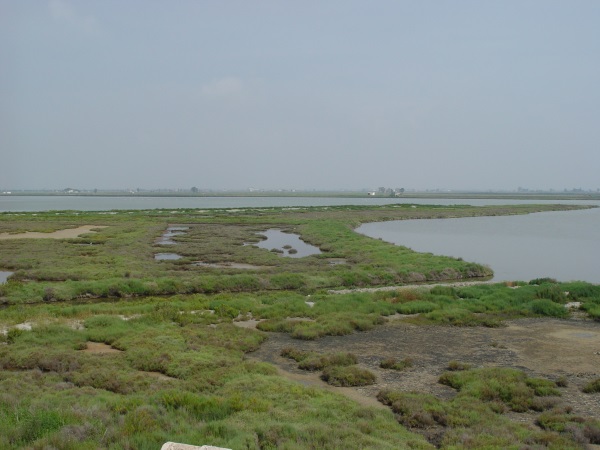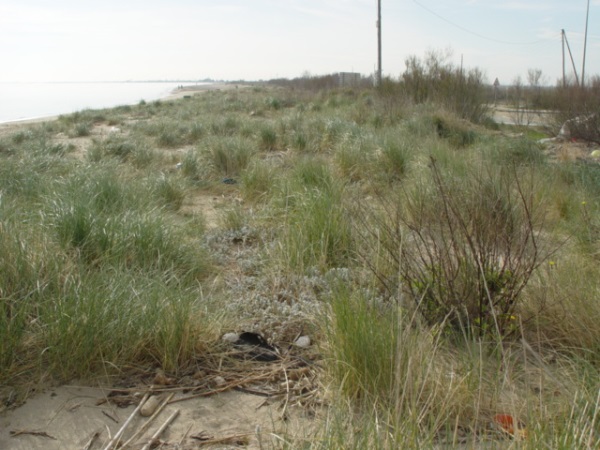The geological characteristics of the Delta and its constant transformation and evolution determine a specific type of vegetation that in no case will allow us to speak of a potential vegetation, but rather of vegetation domains, with plant populations generally linked to the ecological conditions that occur at a given moment. concrete in a concrete place.
In general, in the Ebro Delta, we can differentiate the following domains of vegetation: riverside, helophytic, halophilic, psamophilic and hodròfila.
Riverside vegetation: we find areas with dominance of the riverside forest, occupying, as its name indicates, the area closest to the river bank, although excessive agricultural exploitation has damaged a good part of this forest. The most characteristic species are the aube (Populus alba), the poplar (Populus nigra), the elm (Ulmus minor), the ash (Fraxinus angustifolia) and the borda mulberry (Alnus glutinosa).

Helophytic vegetation: it is found where the water table is high and on the edges of lagoons, the plant population is characterized by reed beds with different companion plants. These plants are generally reed (Phragmites australis), cattail (Typha sp.), Sisca borda (Cladium mariscus). Depending on the salinity of the waters, we find a clear helophytic vegetation like the one previously described that is replaced by a reed with tigernut or maritime rush (Scirpus maritimus). Currently the helophytic vegetation is the most representative of the deltaic environment.

Halophilic vegetation: we find it where the marine influence provides quite high salinity conditions, and where the fluvial influence does not reach, it is in this place where you can find communities of espartinars and salicorniares: soda (Arthrocnemum fruticosum), herbaceous salicornia ( Salicornia herbacea), different limoniums (Limonium sp.), Salty (Atriplex portulacoides), salson (Inula crithmoides). Depending on the degree of salinity and the periods of flooding, we will find more or less homogeneous communities of these species.

Psamophilic vegetation: it is found on beaches and coastal dunes, with a minimum soil salinity thanks to the percolation that the sand of these salts allows. Three types of communities are differentiated: beach tares community (Agropyrum sp.), Barrens community (Ammophila arenaria), and Crucianella marina community (Crucianella maritima).

Hydrophilic vegetation: we find it submerged in water for the most part, in ponds, puddles or water courses and rice fields, the latter occupying approximately 75% of the surface of the Delta. The main species are: duckweed (Lemna sp), goose tongue (Potamogeton sp.).
The knowledge of all these communities gives precise information on the physical conditions of the place in question, very valuable information because it translates into a priori knowledge of the location and biology of the mosquito species that can develop.



